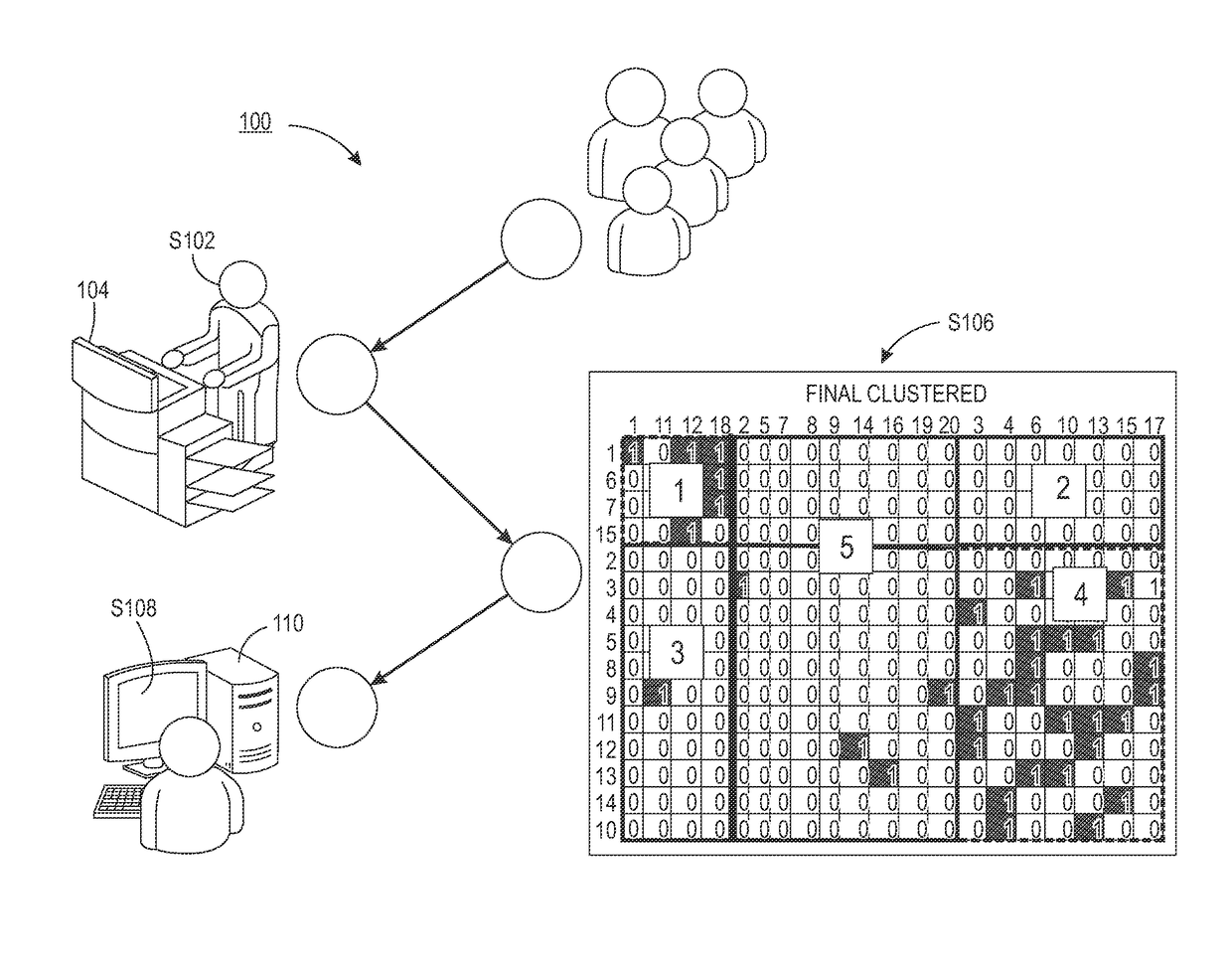Latent student clustering using a hierarchical block clustering method
a clustering method and student technology, applied in the field of latent student clustering using a hierarchical block clustering method, can solve the problems of increasing the complexity of the algorithms required to create personalized clusters and increasing the difficulty of creating homogeneous clusters
- Summary
- Abstract
- Description
- Claims
- Application Information
AI Technical Summary
Benefits of technology
Problems solved by technology
Method used
Image
Examples
Embodiment Construction
[0018]The present disclosure is directed towards an automatic student assessment grouping system that uses a hierarchical block clustering method, based on latent block models. An algorithm is disclosed which considers students and assessment items (“data”) at the same time. The system and method permutes the data into homogeneous clusters. After each block is determined globally, an additional permutation is performed for all blocks that did not converge. Such blocks are identified as having an error rate that is greater than or equal to a predefined threshold value. One aspect of the iterative clustering approach is that it permits flexible boundaries between students and assessment items. In other words, the clusters output by the system and method disclosed herein may be different sizes to achieve the homogenous results.
[0019]One or more implementations of the present disclosure will now be described with reference to the attached drawings, wherein like reference numerals are us...
PUM
 Login to View More
Login to View More Abstract
Description
Claims
Application Information
 Login to View More
Login to View More - R&D
- Intellectual Property
- Life Sciences
- Materials
- Tech Scout
- Unparalleled Data Quality
- Higher Quality Content
- 60% Fewer Hallucinations
Browse by: Latest US Patents, China's latest patents, Technical Efficacy Thesaurus, Application Domain, Technology Topic, Popular Technical Reports.
© 2025 PatSnap. All rights reserved.Legal|Privacy policy|Modern Slavery Act Transparency Statement|Sitemap|About US| Contact US: help@patsnap.com



